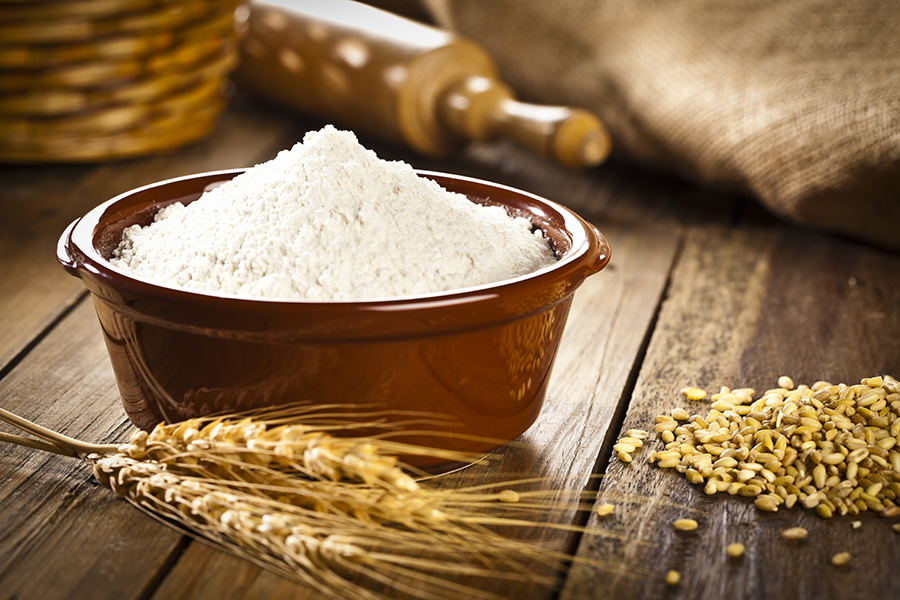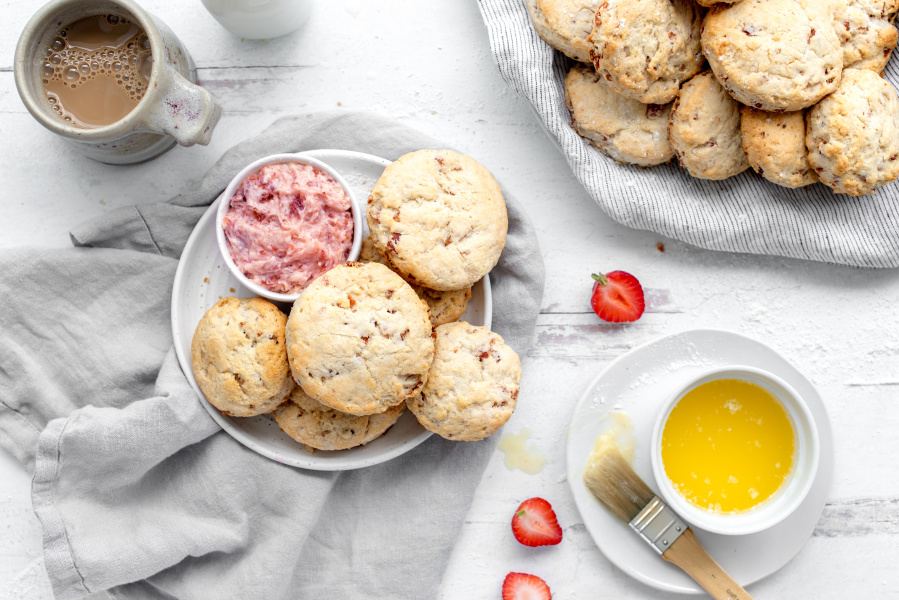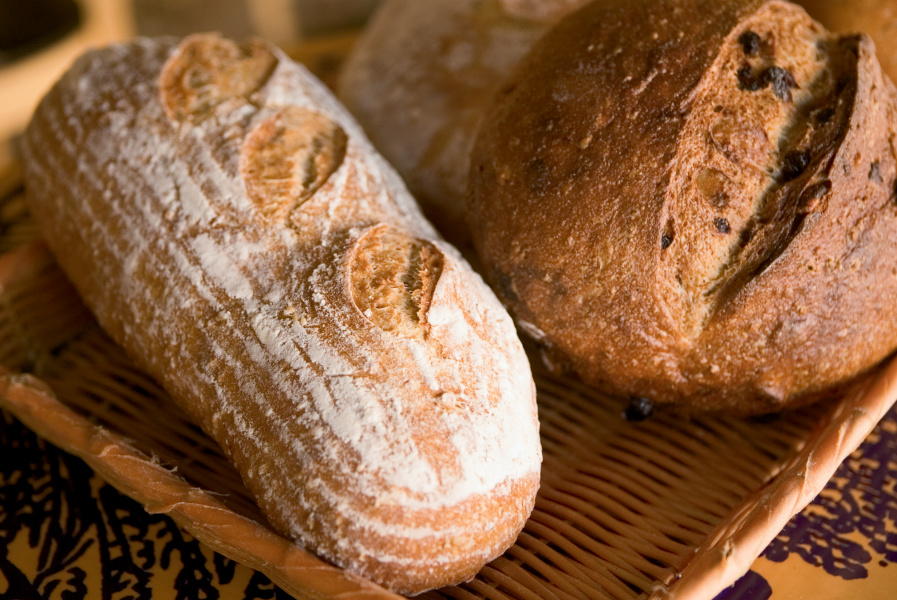Home > Lifestyle > Food For Thought > Baking Flours 101
Baking Flours 101
Do you ever walk down the baking aisle and marvel at all the different kinds of flour available? “Flour” is an umbrella term that can include everything from grains and seeds to nuts and roots that have been ground into a powder, and there are dozens of them out there. Here are a few of the most common types of baking flours you’re likely to stumble upon next time you’re shopping and what they do best.

All-Purpose Flour
Most home bakers keep a few bags of all-purpose flour in their pantry because it’s versatile enough to use for everything from quick breads and cookies to pie crusts and gravy. All-purpose flour is milled from a blend of soft and hard wheat, contains a moderate level of protein (often ranging from 10% to 12%) and is, as you might expect from its name, a wonderful all-around flour for most day-to-day culinary needs.
Best for: Quick breads, cookies, pancakes, pie crust, gravies, sauce thickeners
Bread Flour
Bread flour has a higher protein content than all-purpose (usually ranging from 12% to 14%) and will be your flour of choice when making something that needs a lot of texture, chew and structure. Dough made from bread flour requires more kneading (by hand or using a mixer) to develop the gluten and achieve the texture we all know and love from artisan breads.
Best for: Yeast breads, pizza dough, bagels, cinnamon rolls, pretzels, sourdough
See more: How to Make a Sourdough Starter

Self-Rising Flour
Self-rising flour has an even lower protein content than all-purpose flour and comes premixed with baking powder and salt. It’s an easy and convenient pantry option for anyone who wants to whip up a quick batch of biscuits or pancakes. But beware: Avoid using self-rising flour in place of other flours in a recipe because your end product won’t turn out properly thanks to the premixed leavening agents.
Best for: Biscuits, pancakes, scones
See more: What’s the Difference Between Baking Soda, Baking Powder and Yeast?
Pastry Flour
As you might expect, pastry flour has a lighter texture and lower protein content (around 9%). These characteristics make it the perfect flour to use for things your more decadent bakes that require flaky dough or a more delicate texture.
Best for: Pastries, cakes, muffins
Cake Flour
Cake flour is a little more niche, and it runs in the same family as pastry flour with an almost equal protein content. The primary difference is that cake flour is usually milled to an even finer consistency and bleached, which makes the starches absorb more liquid, which leads to a higher rise in your baked goods.
Best for: Sponge cakes, cupcakes
See more: Fact or Fiction: Debunking Myths About Whole Grains

Whole-Wheat Flour
You can separate wheat kernels into three components: the endosperm, germ and bran. White flour uses the endosperm, but whole-wheat flour utilizes all three components, which makes for a nutty flavor and more dense bakes. Whole-wheat flour has about a 14% protein content and won’t develop gluten as easily as other flours, which makes it a little tricky to bake with. The general rule of thumb is to replace no more than 25% of the white flour in your recipe with whole-wheat if you really want to bake with it.
Best for: Bread, pancakes, pastas
Cassava Flour (Gluten Free)
Cassava flour is made from yucca root, and its texture is similar to that of tapioca flour. It tastes a little earthy on its own but bakes neutral. If you’re using it in place of a more traditional flour in a recipe, keep in mind that it absorbs more liquid than wheat flours. Avoid using it for breads and doughnuts (which require more rise), and instead keep it on hand for denser bakes.
Best for: Gluten-free brownies, cakes, cookies, pizza dough

Almond Flour (Gluten Free)
Almond flour consists of, you guessed it, finely ground almonds. This is a solid alternative to all-purpose flour for gluten-free bakers and can often be used in a 1:1 swap. But you may need to experiment a bit to get the result you want. Baking without the aid of gluten can lead to less rise and more spread. But the perk of almond flour is that you’ll get a nice, nutty finish in your end product that makes for extra tasty desserts.
Best for: Gluten-free cookies, scones, breading
See more: Guide to Alternative Flours
Buckwheat Flour (Gluten Free)
Buckwheat flour has earned quite the reputation for being a good source of fiber and protein. But it also has a great nutty flavor that lends itself well to crackers, muffins and pancakes. Try not to use buckwheat flour entirely on its own in a recipe, since it can result in some seriously dense bakes. But combine it with another gluten-free flour alternative and you’ll get a delicious and nutritious bake.
Best for: Gluten-free baking blends for pancakes, waffles, crackers and crepes
See more: How Lil Bucks Is Creating a New Buckwheat Market and Opportunities for Farmers




Awesome ❤️
I love your idea about this
Thanks for sharing